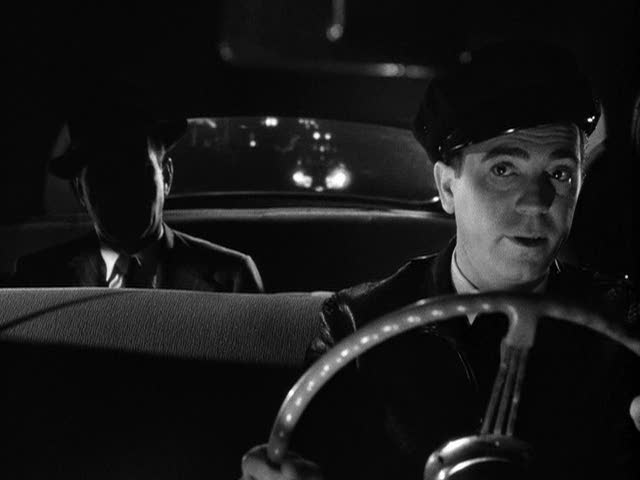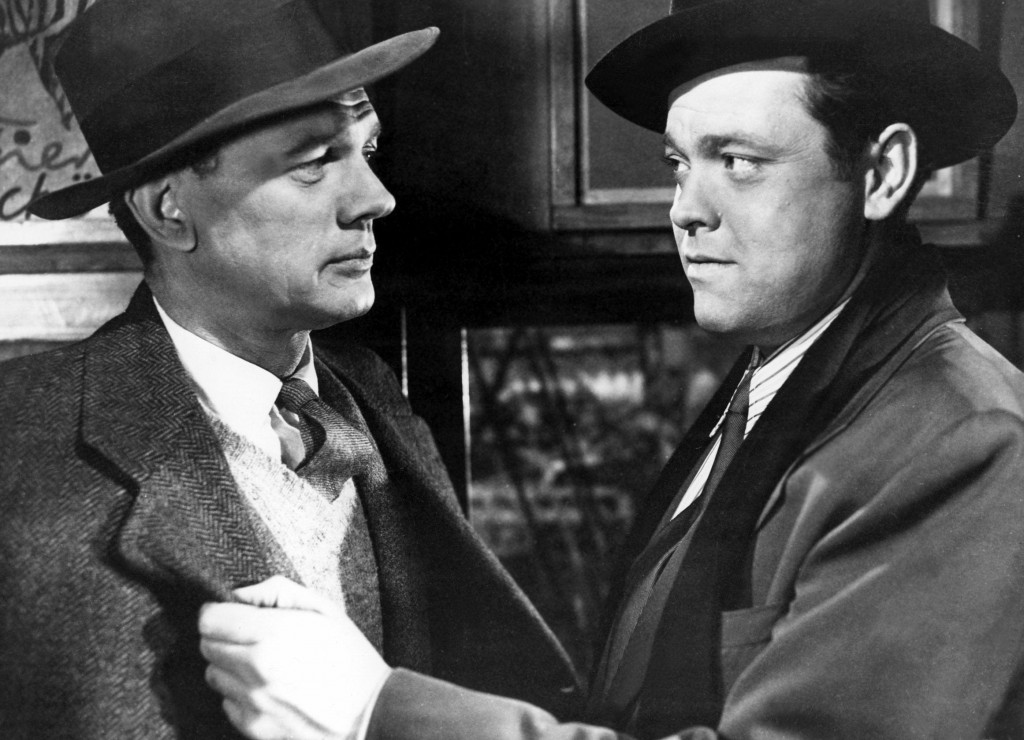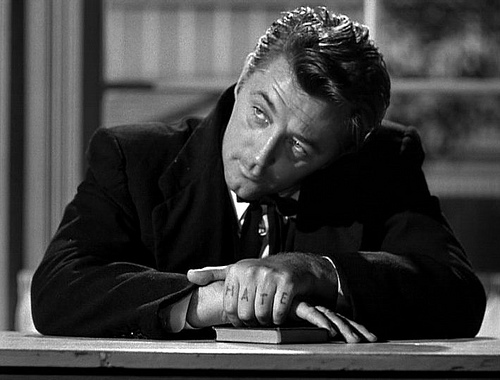There’s never been a better excuse to watch as many noir films as humanly possible than the cinephile community’s current favorite portmanteau. Deadshirt has decided to throw in with a month of essays highlighting some of our favorite works in the pantheon for Noirvember…
As explained in Volume 1 of our Noirvember series, the rules of film noir aren’t as hard and fast one might think. While we associate this sort of film with no-win-scenario tales about private eyes. femme fatales and shades of gray, Noir can encompass a variety of stories. Moreover, film noir can take place anywhere and everywhere.

Dark Passage (1947)
Dr. Coley: Ever see any botched plastic jobs? If a man like me didn’t like a fellow… he could surely fix him up for life. Make him look like a bulldog, or a monkey. I’ll make you look as if you’ve lived.
Vincent Parry: I have, doc.
One of four films Humphrey Bogart and Lauren Bacall starred in together, Dark Passage is the most straightforwardly “film noir” of my three picks here. It’s got all the stereotypical trappings you’d expect from a movie called Dark Passage. Wrongfully convicted Vincent Parry (Bogart) busts out of Alcatraz and goes on the lamb with the help of a mysterious, beautiful stranger (Bacall) whose motives are more complex than what they seem. Thanks to some black market plastic surgery and a tight-lipped cabbie, Parry attempts to solve his wife’s murder all while avoiding the authorities and the jilted lover whose testimony put him in jail.
While the story might seem pretty conventional, the reason Dark Passage is held in such high regard to this day is director Delmer Daves’ groundbreaking and fascinating shooting choices, specifically his use of a first person perspective that puts the audience in Parry’s shoes at various points. Watching the opening ten minutes or so today gives off the distinct sense of watching video game cut scenes/animatics (“Press (X) to punch out passerby for knowing too much”). The movie throws you into the middle of the action and into Parry’s twitchy, nervous desperation.
More than that, though, what’s really clever about the first third of Dark Passage is how Daves deliberately manipulates our senses as a viewer. The film playfully refuses to show us Parry’s “real” face. When we aren’t viewing the world of the film through his eyes, Bogart’s mug is obscured by shadow or a carefully framed shot. When Parry’s recovering from plastic surgery, he’s unable to speak and we watch this Hollywood legend mutely stumble out of dimly lit streetcars in after-dark San Francisco. (Thankfully, he gets some internal monologue.) When Parry’s handsome new face is finally shown, it’s a brand new one. Dark Passage gives us little to no idea who Parry was before joining him mid-escape, let alone what he used to look like.
Once Daves ditches his fancy camerawork, the film reverts to a more traditional thriller. The plot is nothing to write home about, but Bogart and Bacall’s real-life chemistry sells the strange romance between Parry and Irene, two lonely people robbed of the people they care about by a cruel and uncaring world.

The Third Man (1949)
Lime: Holly, I’d like to cut you in, old man. There’s nobody left in Vienna I can really trust, and we’ve always done everything together. When you make up your mind, send me a message – I’ll meet you any place, any time, and when we do meet, old man, it’s you I want to see, not the police. Remember that, won’t ya? Don’t be so gloomy. After all, it’s not that awful. You know what the fellow said – in Italy, for thirty years under the Borgias, they had warfare, terror, murder and bloodshed, but they produced Michelangelo, Leonardo da Vinci, and the Renaissance. In Switzerland, they had brotherly love, they had five hundred years of democracy and peace – and what did that produce? The cuckoo clock. So long, Holly.
I first saw The Third Man years ago while studying abroad in England, screened for the few students that showed up that Wednesday in a huge auditorium. An American in a foreign land that I admired but didn’t completely understand, I really related to Joseph Cotton’s affably in-over-his-head Holly Martins, a down on his luck dime novelist invited to post-war Vienna by his old school chum Harry Lime (Orson Fucking Welles). When Martins arrives, he’s informed Lime was killed by a passing automobile, and is slowly drawn into a cat-and-mouse game between Lime’s former lover Anna (Alida Valli), occupying British Army Major Calloway (Trevor Howard), and…Harry Lime.
The thing about The Third Man, directed by Carol Reed from a script by Graham Greene, is how hilariously and deliberately strange it is. Anton Karas’ creepy zither score is a sharp contrast to the usual heavy horns and wailing saxophones that most noir flicks tend to favor, and it really reinforces how alien the events of the film are for us and for Martins. As we watch Martins being doggedly pursued by a pair of thugs through the bombed-out ruins of Vienna to plucking zither strains, we’re overcome by how completely surreal all of this is at once.
Martins himself is a withering criticism of typical American leading men, a well-meaning but ultimately naive hero who buys into the cowboy cliches of the cheap Westerns he’s (modestly) famous for writing. Martins’ pitiful attempts to woo a wildly disinterested Anna only emphasize how much he’s out of his element amongst the liars and thieves of the Vienna underworld.
Welles, despite being in the movie for a grand total of fifteen minutes, completely and utterly owns The Third Man as Martins’ friend-turned-vicious criminal mastermind. Lurking in alleyways just out of sight of his old friend, we spend most of the movie only hearing about Lime from Martins. When we finally meet him, we realize the jovial prankster Martins remembered from his schooldays has grown into a merciless racketeer willing to sacrifice the lives of children for easy money. Their one, brief scene together atop a moving ferris wheel beautifully pits Lime’s amoral deviousness against Martin’s goofball stoicism, ultimately damning them both.

The Night of the Hunter (1955)
Powell: Chiiilll… dren! …Chiiiil-dren?
Noir flicks are almost invariably movies set in a world of adults and adult problems. Charles Laughton’s sole directorial effort, The Night of the Hunter is something of a depression-era parable. The film’s heroes aren’t private eyes or desperate men with nothing to lose, but John and Pearl Harper, a pair of innocent children on the run with a doll stuffed with money hunted by murderous knuckle-tattooed con-man “Reverend” Harry Powell (Robert Mitchum).
A seemingly unstoppable force of nature, Powell might be one of film’s scariest human villains. A vicious misogynist and literal false prophet, we watch as he predatorily entices young John and Pearl’s widowed mother into marriage, then brutally harangues her for wanting his comfort in bed on their wedding night.
“Look at yourself. What do you see, girl? You see the body of a woman, the temple of creation and motherhood. You see the flesh of Eve that man since Adam has profaned. That body was meant for begettin’ children. It was not meant for the lust of men!”
Powell has no use for women, or anyone for that matter, as anything more than a means to an end (in this case, a pile of misbegotten cash stashed by the children’s late father). Powell’s true formidibility lies in his ability to deceive people, especially other adults. His clerical collar is the perfect disguise of authority, a badge that earns him the implicit trust of the simpleminded. Powell is Robert Patrick’s T-1000 robot about forty years early, just as effective at impersonation while still remaining frighteningly human.
Far away from the skyscrapers and back alleys of New York, Chicago, or even Vienna, the Harpers flee from Powells through woods and fields, across rivers and streams. While not explicitly supernatural, The Night of the Hunter operates under a sort of fairy tale logic. Powell is seemingly inescapable, until he goes up against the children’s new guardian, the stern Rachel Cooper. Mrs. Cooper is Powell’s opposite in every way, firm-handed with the stray children she watches over but motivated only by love and selfless Christian charity. “I’m a strong tree with branches for many birds. I’m good for somethin’ in this old world, and I know it, too.”
Their final confrontation, with her standing guard over her home with a shotgun as Powell lurks in the darkness, is a good versus evil fight of biblical proportions. As their all-night standoff wears on, Cooper and Powell sing “Leaning on the Everlasting Arms” to each other, both a perverse taunt and a righteous rebuttal. When Powell strays too close to Cooper’s home, Cooper wings him with a bullet, and his yelp of pain shatters his veneer of invincibility. It’s a surprising moment, and a lesser film wouldn’t have been willing to let the air out of such a terrifically menacing bad guy. Arrested and almost killed by an angry mob (led by the very people initially taken in by his lies, no less), we never see Powell’s post-conviction execution but, robbed of his boogieman powers, he’s no longer a threat. “It’s a hard world for little things” Cooper says in an address of sorts to the viewer. Good overcomes evil in The Night of The Hunter, but even its happy ending reminds us that isn’t necessarily always the case.
Check Deadshirt.net next Friday for another installment of our Noirvember essay series!


